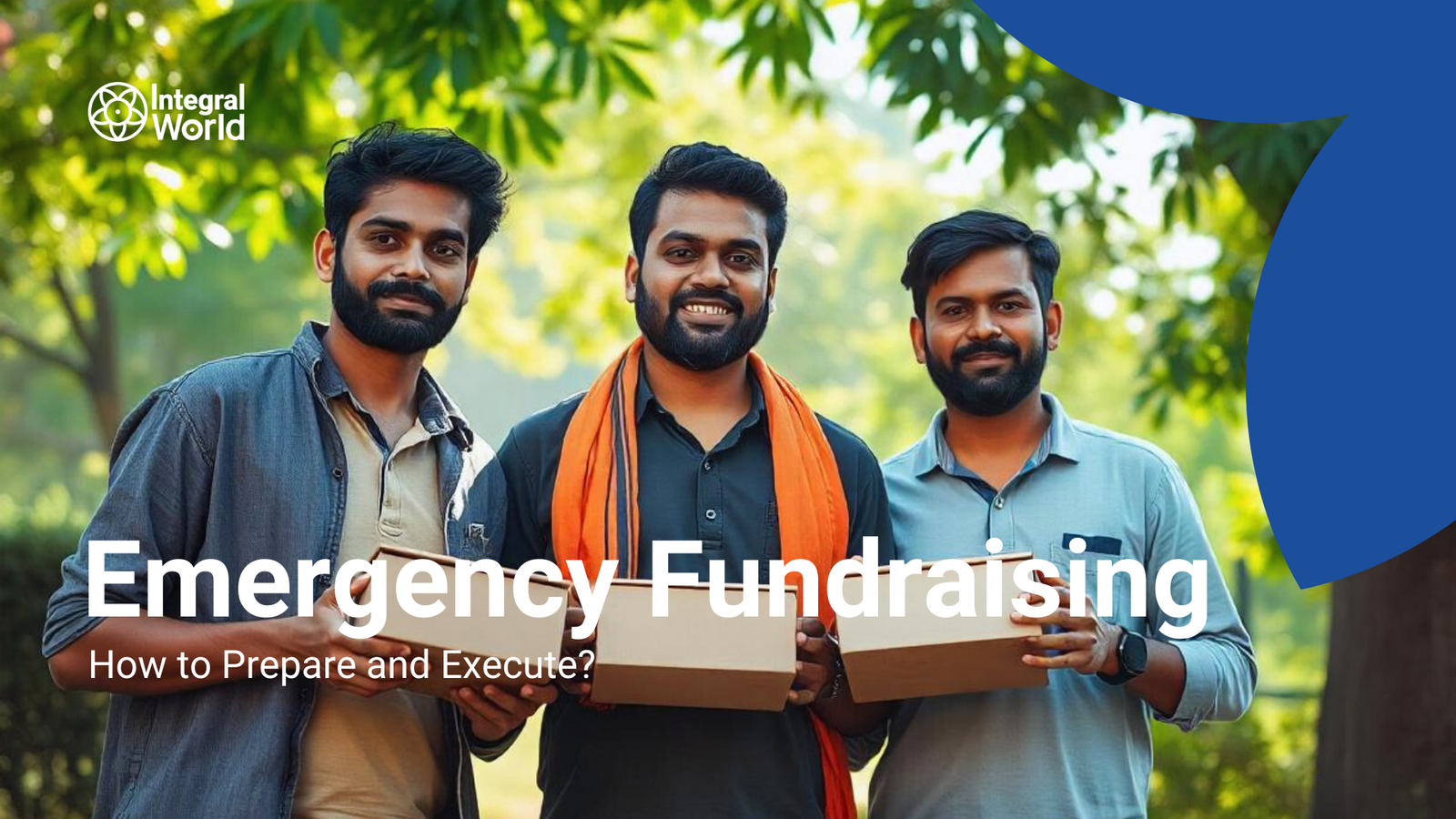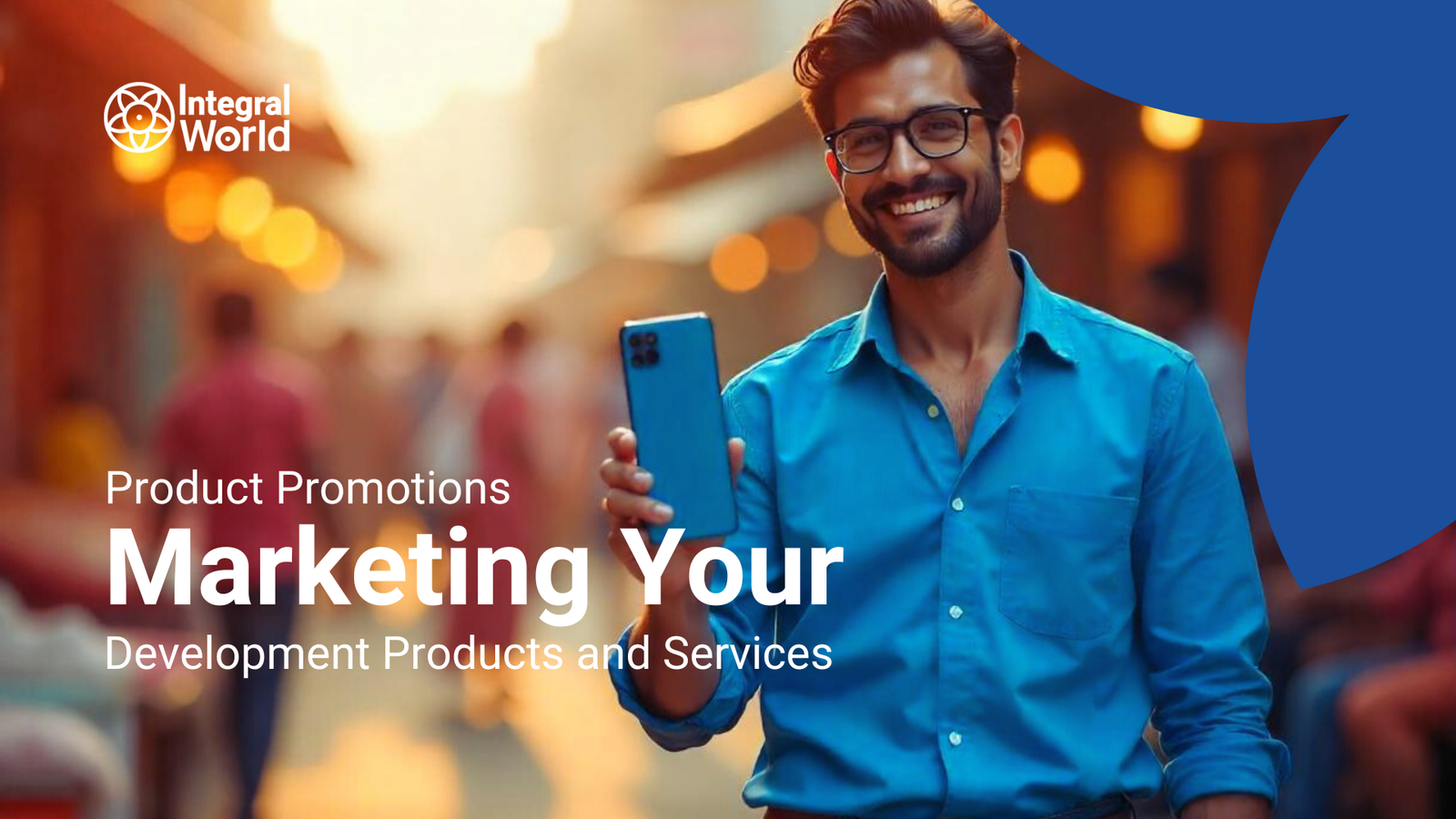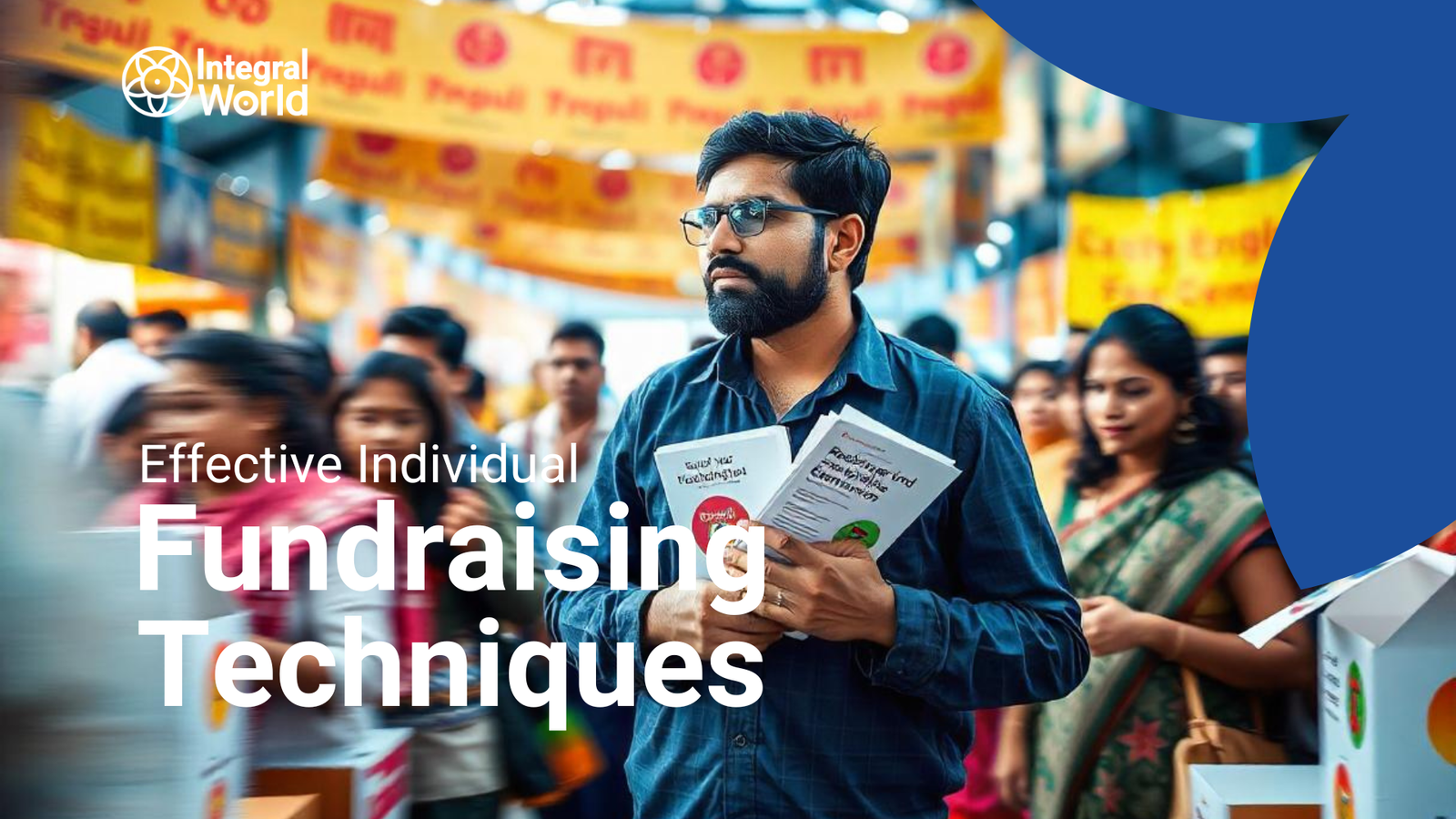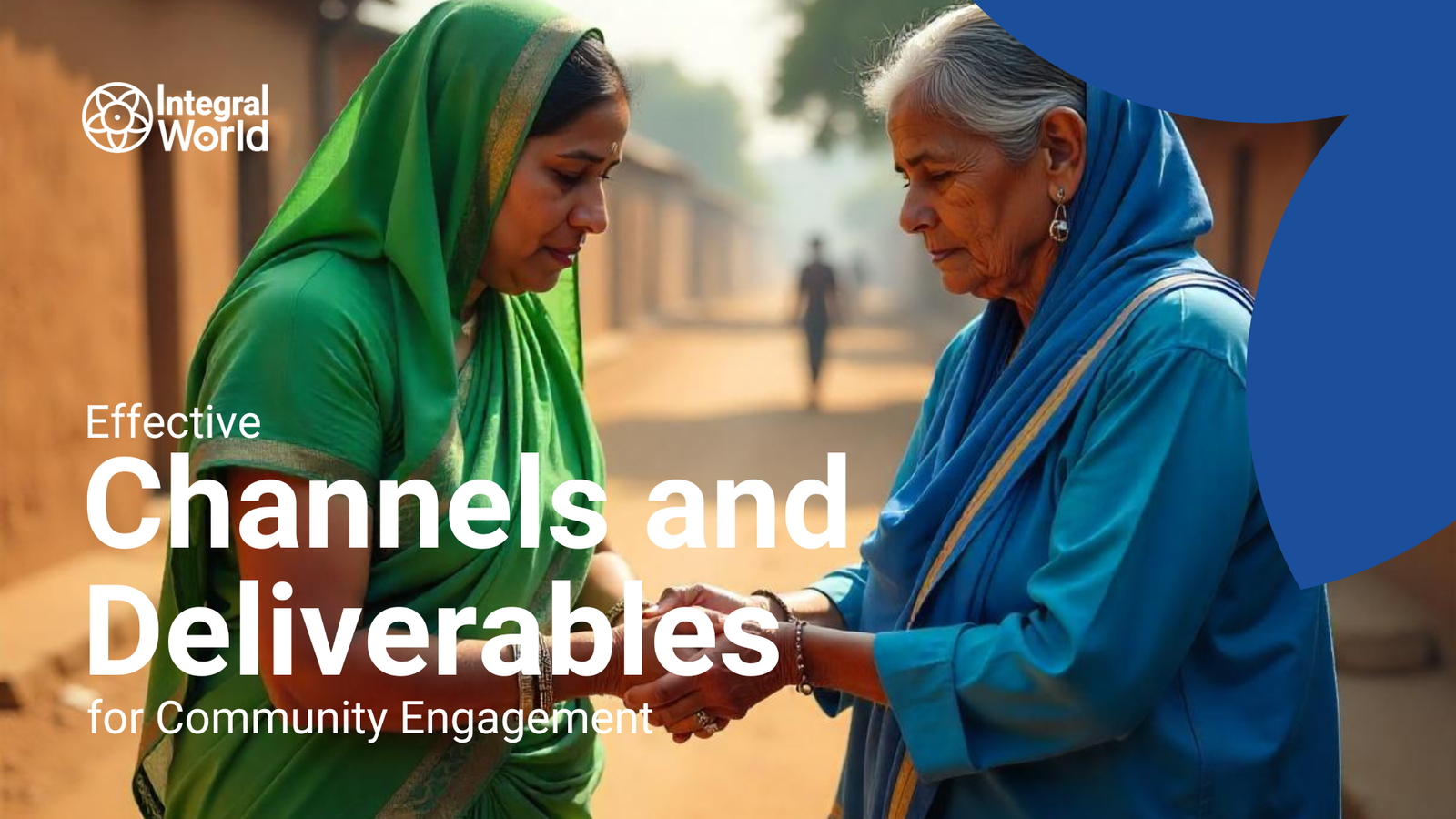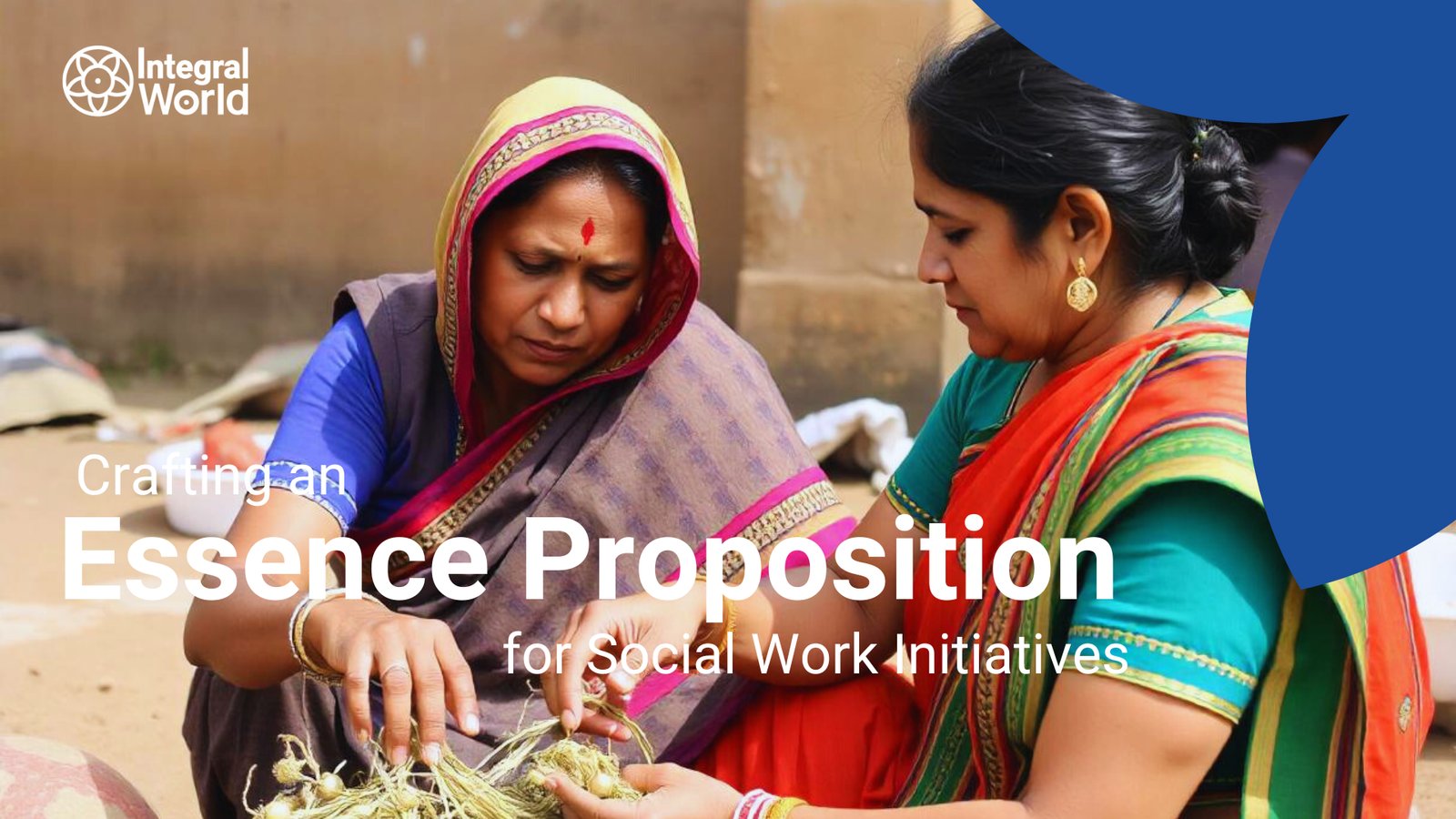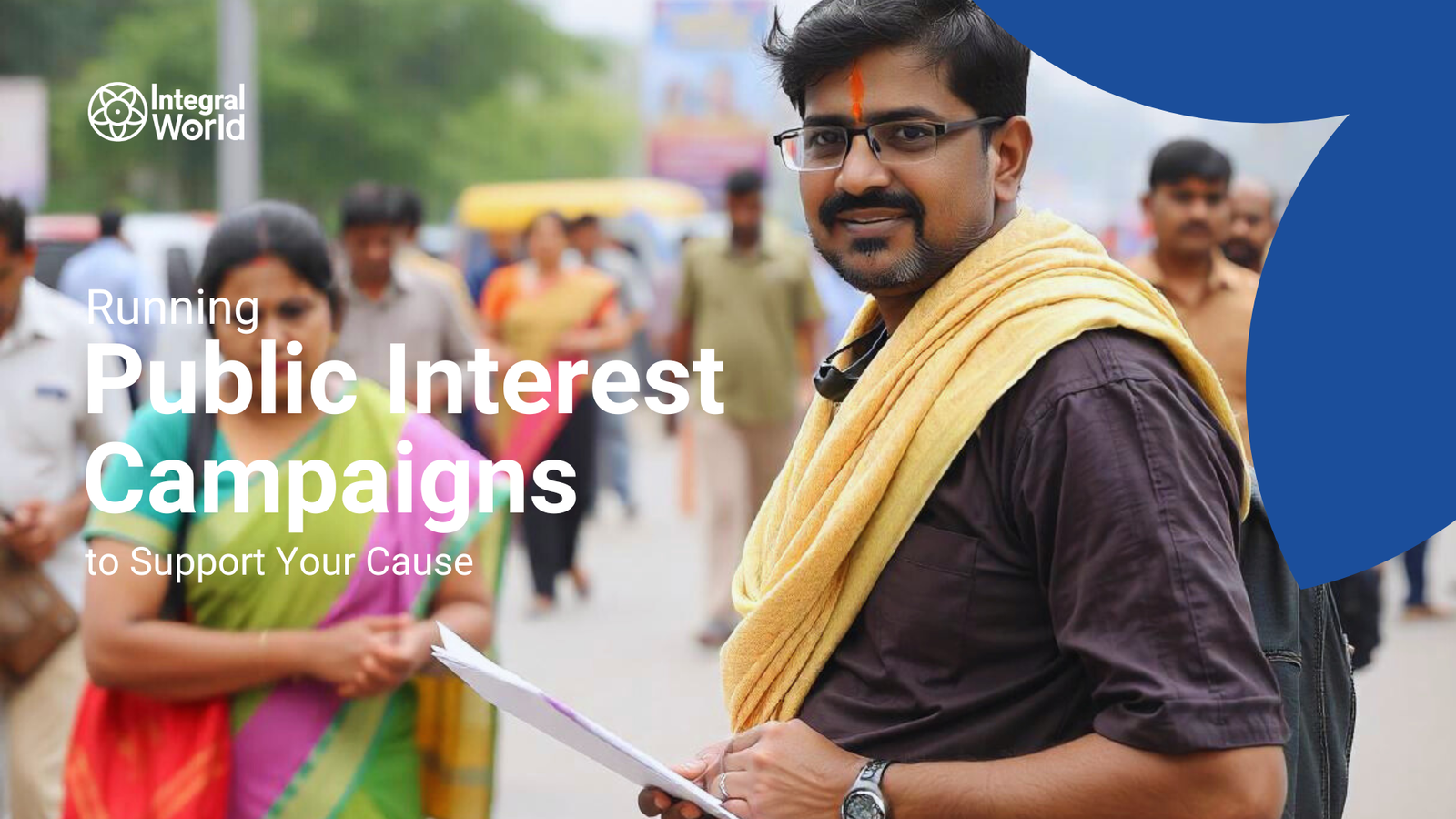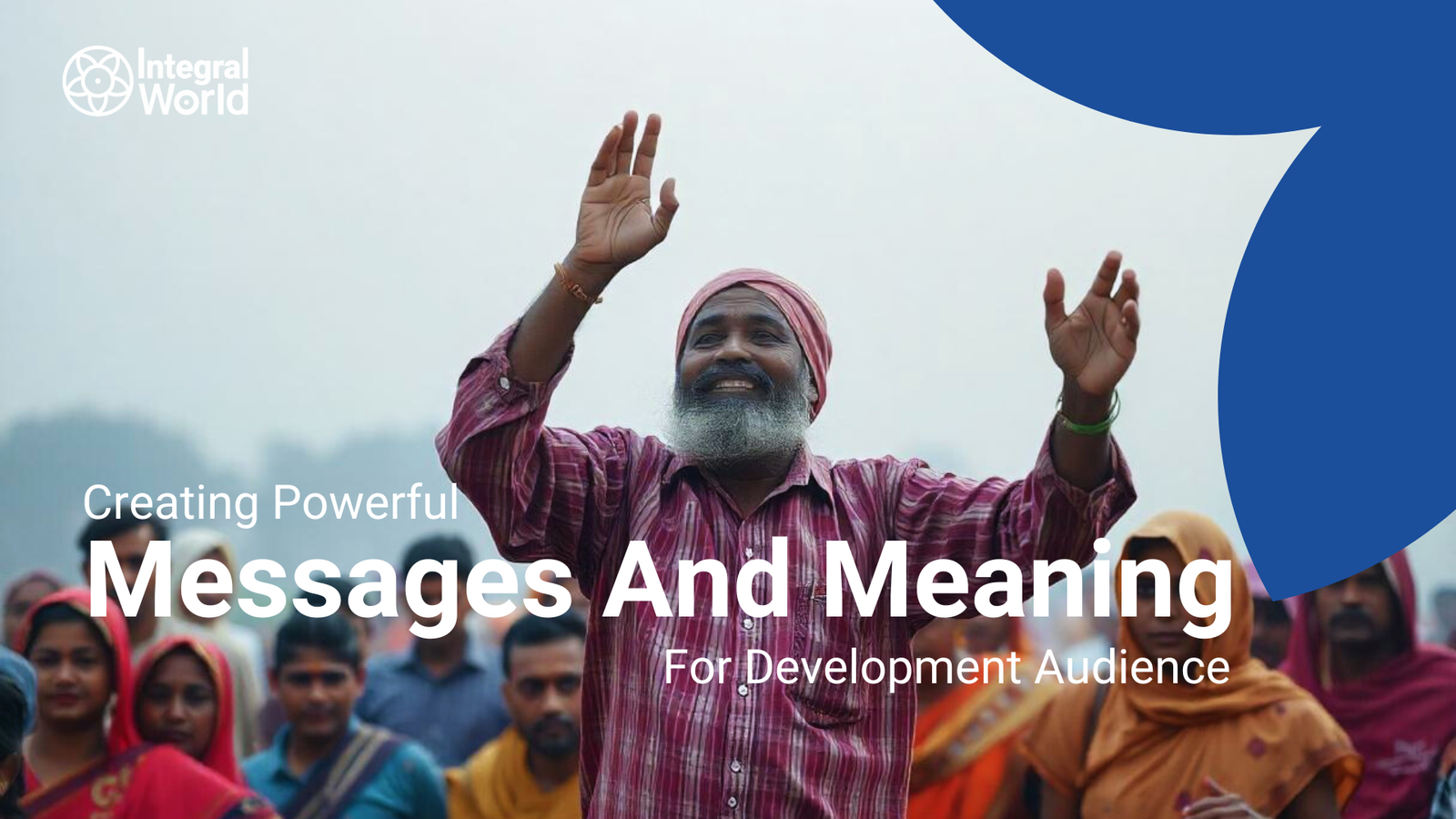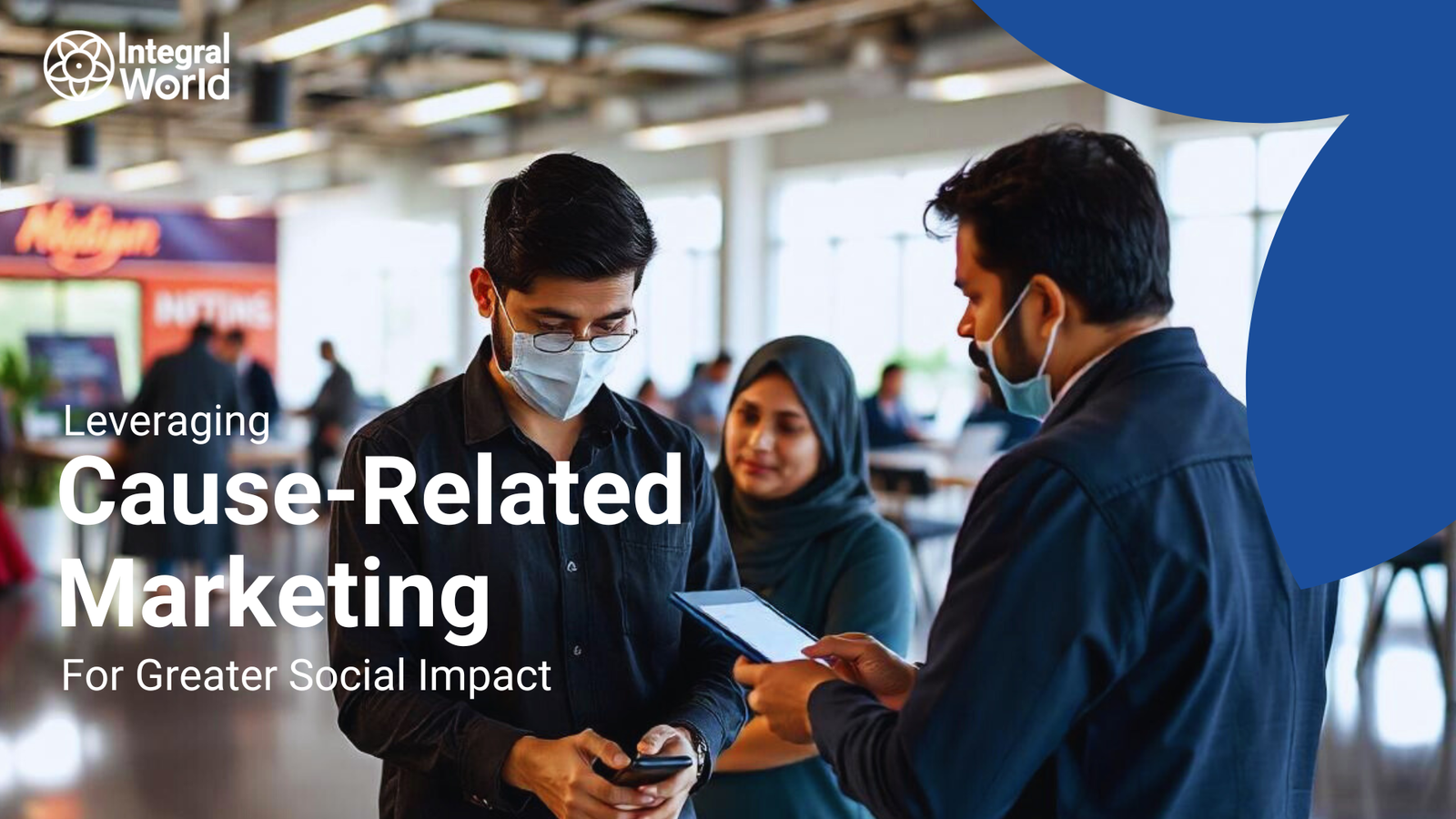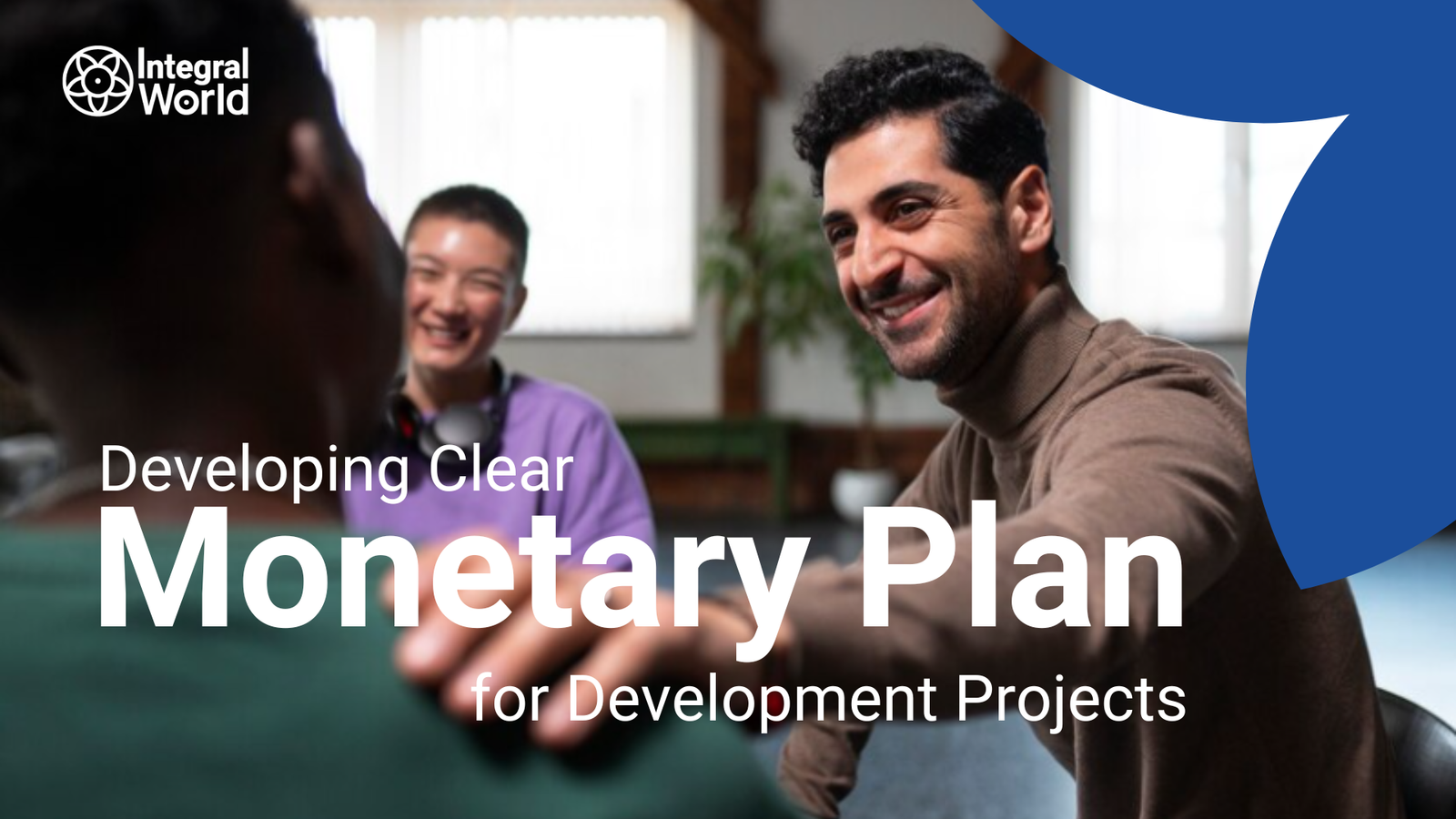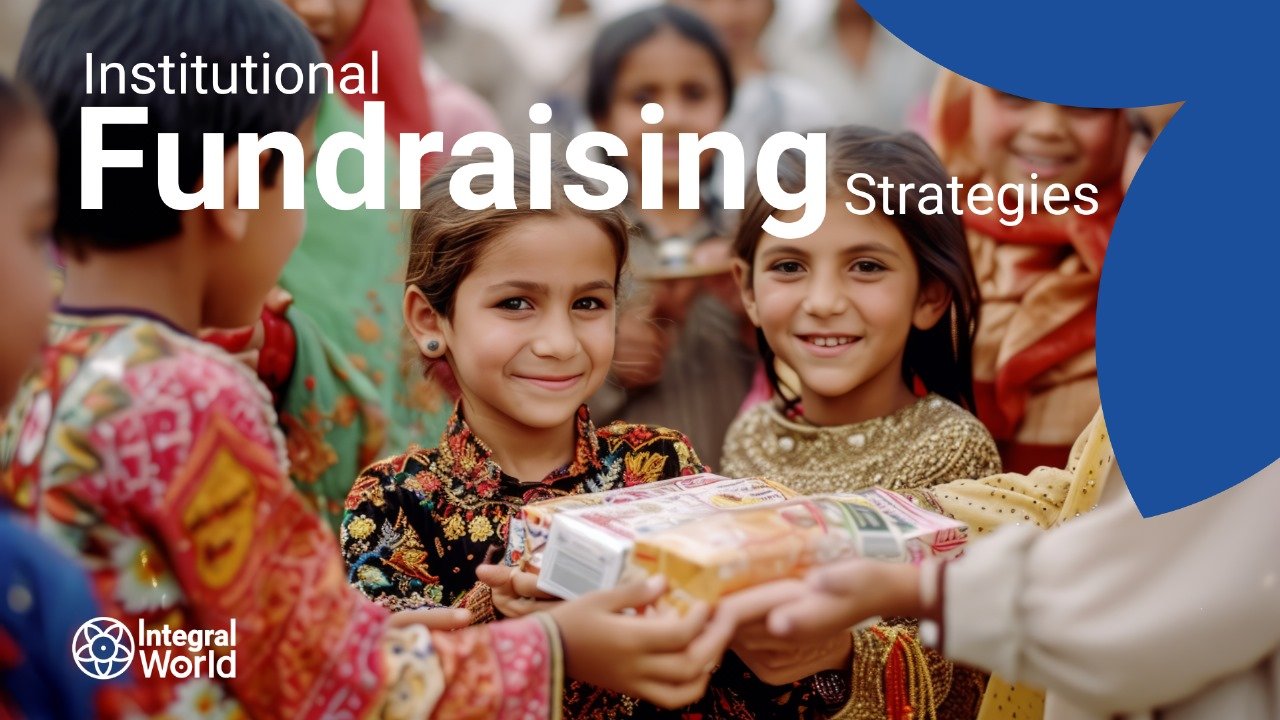Emergency fundraising enables nonprofits to quickly gather funds during unforeseen crises like natural disasters or epidemics. This guide offers practical tips, real-life examples, and expert insights to help organizations like Integral World respond swiftly and effectively in urgent situations.
Continue readingProduct Promotions: Marketing Your Development Products and Services
Boost your nonprofit’s impact with tailored solutions & strategic marketing insights. Integral World guides you toward community-driven success
Continue readingEffective Individual Fundraising Techniques
Explore effective individual fundraising strategies for non-profits, with expert insights and real-life case studies to boost your efforts.
Continue readingEffective Channels and Deliverables for Community Engagement
Community engagement is key to sustainability. This article guides organizations like Integral World in choosing the best channels and deliverables to build connections, boost participation, and achieve long-term goals.
Continue readingCrafting an Essence Proposition for Social Work Initiatives
An essence proposition defines an organization’s core identity and purpose. For Integral World, it can expand influence in sustainable development. This article offers insights from scholars and practical tips for crafting a strong essence proposition for NGOs.
Continue readingRunning Public Interest Campaigns to Support Your Cause
Discover how public interest campaigns, supported by strategic workshops and training, drive community empowerment and positive societal change.
Continue readingCreating Powerful Messages & Meaning for Development Audience
Effective communication is vital in development. Learn how Integral World crafts messages that engage audiences, drive participation, and foster sustainable transformations
Continue readingLeveraging Cause-Related Marketing for Greater Social Impact
Cause Related Marketing (CRM) is an inventive strategy where businesses and nonprofits combine their efforts to achieve win-win situations by merging marketing objectives with social good. For enterprises in the sector of sustainable development, making use of CRM can greatly magnify their social impact as well as enhance attention and participation.
The article examines emerging tendencies in the sustainable development arena, shows how organisations can remain afloat through these changes and introduces Integral World which guides companies through this process.
The Emergence of Cause-Related Marketing
Cause-related marketing moved from being a novelty to a mainstream approach. Companies now understand that they need to align their brands with social causes so as to build more profound relationships with consumers, develop brand loyalty and contribute towards positive changes in society.
Cause-Related Marketing Trends
Highly Demanded CSR by Customers
Consumers increasingly make decisions based on what will be best for society when it comes to corporate responsibility. According to a Cone Communications study 87% of customers are willing to buy products just because the company was advocating the related issue that mattered for them while 76% may not purchase from organisations supporting the cause against their beliefs.
Integration of Sustainable Development Goals (SDGs)
Businesses are increasingly linking their CRMs campaigns with United Nations’ Sustainable Development Goals (SDGs) which further amplifies its social impact among stakeholders who value sustainability.
Data-Driven Marketing Strategies
The use of data analytics in cause-related marketing allows organisations to measure the impact of their campaigns accurately, understand consumer behaviour, and optimise their strategies for greater effectiveness.
Staying Ahead of the Curve in Sustainable Development
So that organisations can effectively leverage Cause Related Marketing, they need to stay ahead of trends within sustainable development.

Here are some key trends and strategies:
Embrace Innovation and Technology
Technological advancements are driving innovation in sustainable development. It means that today technology plays a key role in increasing social impact starting from blockchain for supply chain transparency or artificial intelligence for resource optimization.
Build and Maintain Strategic Partnerships
Creating strategic partnerships with like-minded organisations can amplify impact and drive sustainable development. The business-nonprofit-government alliances create synergy which deals better with intricate social problems.
Transparency Matters
Transparency is an important factor in building trust with stakeholders. Organisations must be clear about what they are trying to achieve, how they are trying to do it, and what the results have been so far.
Community Engagement
Successful initiatives on sustainable development are based on active participation of locals where empowerment is also a key element. Involving communities in decision-making processes ensures that projects remain culturally relevant over time.
Expert Insights on Cause-Related Marketing and Sustainable Development
Industry insiders highlight the significance of being genuine, having strategic consistency, and committing oneself to cause-related marketing plus sustainable development over a long period.
Authenticity is Key
For cause-related marketing to be authentic implies genuinely embracing a cause rather than using it as a marketing ploy. Customers can easily distinguish between authenticity while genuine efforts often build trust more effectively until loyalty becomes part of the brand culture.
Expert Opinion: According to Jane Doe who is renowned in corporate social responsibility, “Authenticity is crucial in cause-related marketing; consumers want real commitment and tangible impact rather than just marketing fluff.”
Align with Core Business Values
Successful cause-related marketing activities go hand in hand with the company’s core values and mission. In this regard, it is important to ensure coherence in messaging.
Expert Opinion: For example, according to John Smith who works as a sustainability consultant, “When cause-related marketing aligns with a company’s core values, it creates a powerful synergy that resonates with stakeholders and drives long-term success.”
Long-Term Commitment
Short-term campaigns may generate temporary buzz, but long term commitment is necessary for sustainable impact. Organisations should concentrate on establishing enduring partnerships and initiatives that promote ongoing improvement.
Expert Opinion: According to Emily Johnson of development sector experts, “For meaningful and lasting impact, social causes require long term commitment. It calls for dedication, resources and ability to change along with changing times”.

Practical tips on how to do Cause-Related Marketing
For organisations that wish to employ cause-related marketing for a greater social impact, here are some practical steps:
Find Causes That Matter
Choose causes that your company’s mission, values and target market can relate to. Look into the needs and preferences of your stakeholders so as to choose what they will be interested in.
Set Objectives
Have clear objectives for your cause-related marketing campaign that can be measured easily. These goals should be in line with both your marketing goals and the desired social impact.
Make Your Campaigns Superb
Develop innovative campaigns that resonate with your audience while encouraging action. Use narrative techniques, visuals, interactive content among others which leave behind an indelible memory of your campaign.
Collaborate with Influencers
Partner with influencers who have similar interests so they can push your message farther. With their help you will reach out to a wider audience thus enhancing credibility in your campaign.
Monitoring and evaluation
Monitor progress of campaign periodically using data analysis to track key performance indicators (KPIs) make necessary changes so as to optimise impact.
Integral World’s Role in Guiding Organizations
Integral World is committed to helping organisations leverage cause-related marketing for greater social impact. Our areas of expertise in sustainable development, strategic partnerships, and community engagement make us a reliable guide for organisations who wish to be on the cutting edge.
Our Approach:
- Strategic Guidance: we provide specialist consulting on cause selection, objectives setting as well as campaign creation.
- Partnership Development: We help companies cultivate relationships with like-minded partners to scale up impact.
- Community Engagement: We underscore the value of community-driven approaches; hence empowering local stakeholders to actively engage in development initiatives.
- Monitoring and Evaluation: We offer tools and know-how to track progress of campaigns so as to improve them continuously while ensuring long-term effects are achieved.
Conclusion
When it comes to making a bigger mark through this CSR avenue, organisations must do it strategically from the heart. To realise maximum social welfare returns while effecting meaningful change, organisations should look out for trends in sustainable development that are emerging, build links with strategic partners perfectly aligned with their objectives, transparency and engaged communities.
However, at Integral World we aim at guiding you through these trends by providing insight and assistance necessary for achieving success in an evolving area of sustainable growth. Together let’s build a healthier world that is fit for all.
Get involved today and support the Integral World in our mission to promote sustainable development through new-fashioned cause-related marketing. Click on our website for more information about what we do and find ways of working with us on this. In unity, we will multiply our efforts to make a real change.
Develop a Clear Monetary Plan for Development Projects
Our mission at Integral World is to advocate for sustainable and holistic development. This commitment includes ensuring financial viability and sustainability of all development projects we undertake. A comprehensive monetary plan should be developed as part of this effort.
This article will give step-by-step guidance with experts’ quotes and practical examples on how to develop a strong monetary plan for development projects. Also, the article will discuss the capacity of Integral World in identifying and solving developmental challenges.
Financial planning is not just another item on the list of requirements in doing what they do but rather it forms the backbone upon which the entire development undertaking stands. Without proper financial planning however even the most promising projects may fail. The success and sustainability of our initiatives at Integral World largely depends on effective monetary plans we develop.
This guide provides insights from experts using practical examples, while outlining essential steps towards developing comprehensive monetary plan.
1. Conducting Needs Assessment
Before starting with financial planning, it’s key to know what your project looks like. Hence knowing exactly what resources you need or anticipate coming across problems will emerge from conducting need surveys.
Steps for Conducting Needs Assessment:
Set Goals: Clearly state objectives for your project; what do you want to achieve? Who should benefit from this project?
Obtain Data: You can collect both qualitative and quantitative data to understand the current situation. This might involve conducting surveys, interviews, and community meetings.
Establish Resources: Identify what is needed in terms of finance including human resources as well as materials.
Identify Gaps: Notice the disparities existing between present resources and those that are required to fulfil your objectives.
Priorities Needs: Order all the significant ones from first to last importance.
Expert Quote: “A comprehensive needs assessment is the foundation of any successful project. It ensures that you’re addressing the real issues and setting realistic goals.”—Paul Farmer M.D., PhD; Co-Founder of Partners In Health

2. Setting Clear Financial Goals
Once you know what your project needs, specifically talking about your monetary plan there has to be a way of measuring this. The financial goals for your project are basically established out of its need so it is like measuring its financial success through these goals.
Steps for Setting Financial Goals:
Specify Funding Requirements: How much will it cost you to implement the whole project inclusive direct costs?
Divide Costs into Categories: Divide total funding requirement into smaller units. This may include personnel, materials, infrastructure or contingencies among others.
Set Milestones: Achievable financial milestones will help monitor progress made towards achieving funding requirements for the project.
Estimate Revenue Sources: Identify possible funds like subsidies, contributions, or partnerships.
Expert Quote: “A clear financial goal is your project’s roadmap. And this will ensure that you are focused and you have the resources needed to achieve the objectives” — Muhammad Yunus, founder of Grameen Bank
3. Creating a Detailed Budget
A detailed budget that provides an overview of all expected costs is a foundation of any sound monetary strategy and ensures appropriate allocation of money.
Steps for Creating a Detailed Budget:
List All Expenses: Identify all potential expenses related to your project. These include both direct (i.e., salaries and materials) and indirect (i.e., administrative fees) costs.
Categorize Expenses: Group up various expenses into categories for easier tracking and management.
Estimate Costs: Assign each item on your list a cost estimate by using the historical data, quotations from suppliers or opinions from experts so as to make sure it is accurate.
Allocate Funds: Figure out how much money would go into each category and item.
Review and Revise: Regularly check your own budget then adjust as required because this keeps you on track allowing reactions to changes that may arise unexpectedly.
Expert Quote: “Any project should have a well-prepared budget as it helps allocate resources efficiently while anticipating possible challenges” — Esther Duflo, Nobel laureate in Economic Sciences
4. Identifying Funding Sources
Securing funding is one of the most difficult parts of any monetary plan and a development project; hence there should be different sources of funding to guarantee financial stability in terms of funding options including venture capital funding other than relying on just one source alone.
Steps for Identifying Funding Sources:
Research Grant Opportunities: The search for grants from government agencies, international organizations, and private foundations which are aligned with your project goals should begin here first.
Engage Donors: Create personal contacts with individual donors who are passionate about what you are doing making it more personalized and more convincing.
Partner with Corporations: Approach corporations with corporate social responsibility (CSR) programs to form partnerships that can provide support in terms of money as well as in-kind donations.
Crowdfunding: Use crowdfunding platforms which help you reach a wide audience and collect small sums from each.
Fundraising Events: Organize events that will raise funds and engage your community. They also act as an avenue for creating awareness about the project and getting new supporters.
Expert Quote: “To avoid overdependence on one source of finance, every project should diversify its financial sources so as to have a steady flow of resources” — Melinda Gates, co-chair of the Bill & Melinda Gates Foundation

5. Implementing Financial Management Practices
Efficient financial management practices help ensure control over project finances, transparency and accountability.
Steps for Implementing Financial Management Practices:
Establish Financial Policies: Create policies and procedures governing financial management in your project including those relating to budgeting, expenditure control as well as reporting.
Use Accounting Software: Install accounting software packages capable of tracking income and expenses, managing budgets, or generating financial statements.
Monitor Cash Flow: Watch your cash flow regularly to make sure it is enough to meet all charges. Address any cash-flow challenges promptly when they arise.
Conduct Audits: Conduct regular internal audits together with external audits so as to be accurate on issues regarding finance and regulations compliance at all times.
Report to Stakeholders: Release periodic financial reports for donors, partners or other members of the public. By practicing transparency we develop trust encouraging people’s ongoing support.
Expert Quote: “A project cannot succeed without efficient financial management which is crucial in ensuring that resources are utilized properly and stakeholders have faith in your organization.” — Ngozi Okonjo-Iweala, Director-General, World Trade Organization
6. Monitoring and Evaluation
The continuous monitoring and evaluation of the financial health of your project assists you to make informed decisions.
Steps for Monitoring and Evaluation:
Set Performance Indicators: Put forth some key performance indicators (KPIs) to measure the success of your project within a financial context. These can include budget compliance, cost avoidance, as well as fundraising efficiency.
Track Expenses: Always keep track of how much you spend against what you had planned to spend. This will enable you to identify any variances and their causes.
Evaluate Revenue Streams: Evaluate how well funding sources perform. Find out those that are doing well and those that need improvement.
Adjust Plans as Needed: Make adjustments to your financial plan using information obtained from monitoring and evaluation activities. This might require you either source new finances or even reallocate money or just revise goals related to projects.
Report Findings: Share these findings with stakeholders so they can be aware. By being transparent about this it will promote trust between parties involved by looking responsible on matters related to finance.
Expert Quote: “Diversifying your funding sources is crucial for sustainability. It reduces dependence on a single source and ensures a steady flow of resources.” — Melinda Gates, co-chair of the Bill & Melinda Gates Foundation
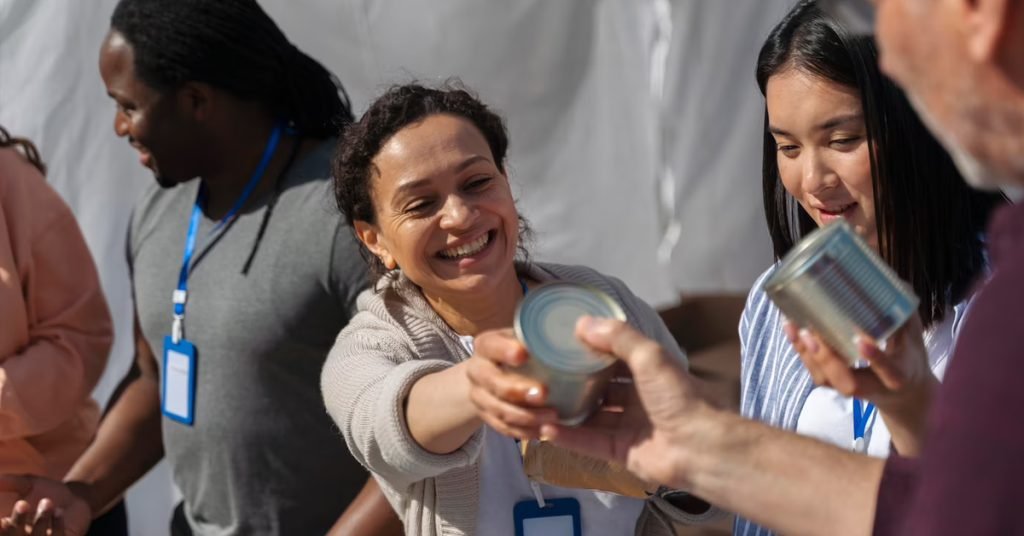
Actionable Tips:
Begin Early: Start your financial planning process as soon as possible so that you are able to secure funding in time and allocate resources appropriately.
Let there be transparency: In your financial transactions let there be openness so that stakeholders will have confidence in you which leads to continued support
Stay flexible enough: Be ready to make any changes in your financial plan based on findings of monitoring and evaluation
Involve stakeholders all along the way: Keep stakeholders informed and engaged throughout the financial planning process so that they feel part of it.
Embrace Technology: Use technology in order to simplify things such as finance management while ensuring accuracy and efficiency at all times.
Conclusion
Developing comprehensive monetary plan is crucial for successful development projects. These include carrying out needs assessment, setting up clear targets for money, preparing a budget with details, identifying many sources of funds, using efficient means of managing finance, routinely monitoring performance towards set goals among others. This way non-profit organizations can ensure their projects do not drain financially but rather stay financially viable through implementing them within provided budgets.
At Integral World we take pride in our ability to develop robust monetary plans. Our method has led us through countless developmental hurdles while achieving sustainable positive outcomes for our served communities. Integral World is committed to fostering sustainable holistic development. In accomplishing these aims please partner with us by supporting our initiatives or getting involved otherwise. For additional information about this organization including its projects log on www.integralworld.org . By joining hands together we can form an even brighter future than this one.
“Service to others is the rent you pay for your room here on earth.” – Muhammad Ali
Institutional Fundraising Strategies for Development Orgs.
Picture yourself on the edge of opportunity and looking at a world that is ripe for transformation. As an organization involved in development, you are motivated by the desire to make a real difference in the lives of individuals and communities in need. To achieve this, effective fundraising strategies are essential.
Now, the question is how to secure resources required for translating such dreams into reality? Institutional fundraising could be your organization’s ticket towards success.
In this piece, we will look at effective institutional fundraising strategies designed specifically for Integral World as a developmental organization. We will dwell on real life experiences, offer unique insights and give inspirational quotes by renowned people that can help you maneuver through this critical part of your mission.
Effective Institutional Fundraising Strategies
1. Know Your Donor Landscape
There is a need to understand who contributes what among all donors before undertaking any fundraising campaign. You should identify potential institutional donors like foundations, corporations, government agencies or international organizations with missions and values aligned to yours.
Getting acquainted with one’s donor landscape involves extensive research aimed at identifying persons who are most likely to support their cause. This entails studying about their giving history as well as knowing their priorities and the way they usually make decisions. Developing detailed profiles for each potential donor would greatly increase chances of securing grants.
2. Come Up With an Attractive Case for Support
Your case for support is simply your pitch to prospective donors; it has got to be captivating enough, easy-to-understand and straight-to-the-point highlighting why your work matters so much. Employ storytelling techniques to demonstrate practical implications of your projects in real life scenarios.
A good case for support encompasses a clear problem statement, proposed solution and expected outcomes. It also highlights the unique strengths of your organization as well as its achievements over time thus enhancing credibility.
3. Establish Strong Relationships
Fundraising is not just about transactions but building relationships. Maintain regular communication with potential donors, update them on the progress made so far and invite them for your events. Show gratitude for their assistance, associate them with your success stories.
Consistency and meaningful engagement are crucial when it comes to nurturing relationships with donors. Keeping up to date with projects, personal communication and allowing donors opportunities to visit and interact with your programs can enhance these relationships.
Quote: “Alone we can do so little; together we can do so much.” – Helen Keller

4. Exploit Data And Research
Use data as well as other information from research to back up your case for support. Familiarize yourself with donor preferences by doing extensive studies so that you can customize your proposals accordingly. Demonstrate how evidence-based approaches are applied in order for you to achieve organizational goals.
Data and research play a pivotal role in convincing stakeholders about the efficiency and effectiveness of an organization’s operations. Clear presentation of evidence based results can help you differentiate yourself from others hence gaining trust from potential funders.
5. Tailor Your Proposals
As each donor is different, it’s important to tailor fundraising strategies to their specific interests and requirements. This should involve highlighting those aspects of your work that align with their interests and indicating how their support will make a change.
By tailoring your proposal, you get to know what each donor wants, likes or desires for his or her money. It also means that you have to personalize the language, focus areas, and even the presentation format as per the need of the donor.
6. Diversify Your Funding Sources
It is dangerous to rely on one source of funding. Instead, seek support from different types of donors so as not be caught off guard when some sources dry up. In this way; you not only enhance your chances of acquiring funds but also ensure financial sustainability.
For diversification purposes, you can apply for grants from various foundations as well as seek sponsorship from the corporate world among others. Other than that fundraising ways like events or online campaigns could be explored too.
7. Communicate Impact Effectively
One of a donor’s greatest wish lists would be seeing where his or her contribution has led to actual results. Regular project reports, newsletters, social media updates would provide good communication channels about project outcomes undertaken by someone else on behalf of the organization in question while leaving visually appealing stories can do better towards making it more relatable and tangible..
Effective impact communication entails reporting not only on quantitative outcomes but also sharing qualitative stories and testimonials. On top of that there are visuals such as infographics, photos, videos etc., which help make impact more vivid and more gripping.
“The measure of who we are is what we do with what we have.” – Vince Lombardi

8. Invest in Capacity Building
Internal capacity building plays a vital role in effective fundraising. Train your staff, improve your fundraising tools, and develop strong donor management and reporting systems.
Capacity building can be conducted through training programs, workshops as well as investment in technologies that streamline the process of raising funds. It will also enhance organizational abilities to raise funds for an organization if it has a team of fundraisers who are skilled and knowledgeable.
9. Engage Your Board and Volunteers
Board members and volunteers can be powerful advocates for your organization. They should be trained in fundraising techniques as well as involved in reaching out to donors. Their networks may open doors to new funding opportunities.
Board members as well as volunteers could help with fundraising through their networks or being ambassadors of the organization. This is possible once they have been given the necessary tools to work with them such that they become useful fully.
10. Stay Transparent and Accountable
Transparency is one way of creating trust between you the donor so that when you offer money he has surety that his fund was used effectively while you also give feedback on its outcome but not getting too much attention from this action creates suspicion on him/her mind towards you hence no need to disturb someone’s peace by trying interfere with his/her personal affairs within him/herself.
To build trust with donors, transparency must remain at the core of any activity aimed at accessing their funds leading them into very detailed reports while remaining open about one’s successes and challenges in order to maintain the trust of the latter and continue getting more support from them.
Transparency is the first step towards gaining credibility and trust from your donors by allowing them to see your financials, project results, and even the challenges you are facing. Donors may be maintained if there is regular honest communication.
“In corporations, transparency, righteousness, compassion, management of resources and even entertainment always work”. – John Gerzema
Conclusion
To ensure sustainability as well as growth in development organizations institutional fundraising forms a key aspect. By knowing who donates to you, making compelling cases for support, building strong relationships and using data , one can improve on their fundraising efforts which will ultimately lead to meaningful change.
Integral World has witnessed how effective fundraising strategies can change lives. By diversifying our funding sources, tailoring our proposals and being transparent we have created strong partnerships that have helped us make a difference.
Are you ready to take your fundraising efforts to the next level? Be part of Integral World’s vision of sustainable and holistic development. Get in touch with us today so as to find out more about how you can assist us achieve our goals thereby being part of this transformational process. Let’s make some real impact together!

